Are you fascinated by these small and agile birds that flit around in your backyard? Or maybe you’re dealing with a sparrow infestation and are looking for solutions. Whichever the case, this post is for you!
As an avid birdwatcher and experienced pest control expert, I have learned all there is to know about sparrows.
In this ultimate guide, I’ll be sharing everything you need to know about these lively little creatures – from their behavior and habitat to tips on how to attract or repel them. So let’s dive into the world of sparrows together!
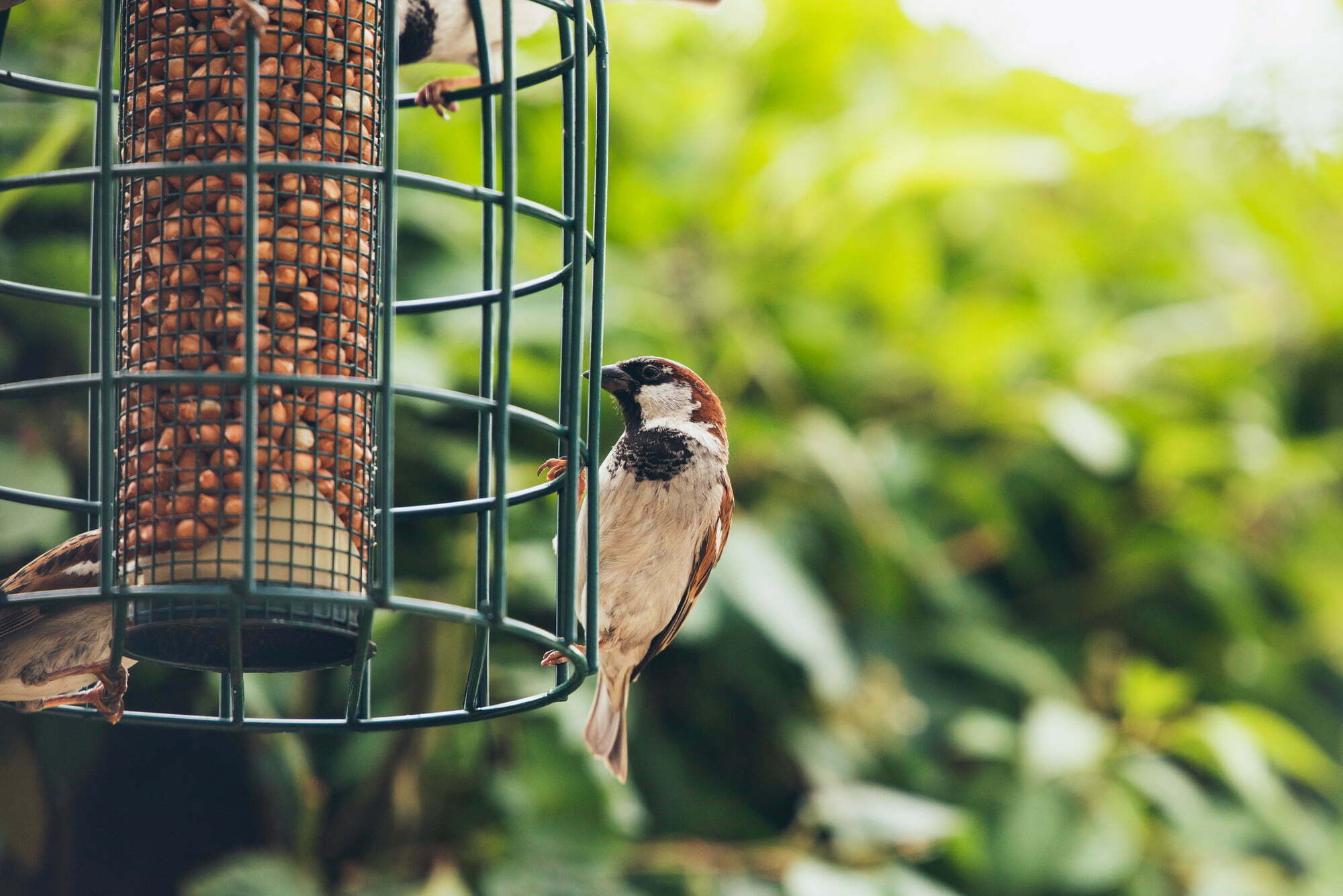
What Do Sparrows Look Like and Where Do They Live?
Sparrows are small, stout songbirds characterized by a stout bill ideal for seed-eating. Typically, sparrows’ feathers are shades of brown, gray, and white, with patterns varying among species.
Your ability to identify sparrows can be enhanced by observing specifics such as the tail length, bill shape, and markings on the throat, cheek, and cap.
For example, the Chipping Sparrow has a distinctive rusty cap and clear breast, while the White-crowned Sparrow displays bold black and white stripes on its head. In contrast,
House Sparrows, among the most recognized species, flaunt gray heads and white cheek markings.
Here’s a brief overview of various sparrow species:
- Song Sparrow: Brown streaks with a central spot on the breast.
- American Tree Sparrow: Rusty cap and eyeline with a bi-colored bill.
- Savannah Sparrow: Streaked with yellow flecks over the face.
- Lincoln’s Sparrow: Finely streaked with a buffy wash and subdue markings.
- Fox Sparrow: Large with rich red hues and heavy spotting.
- White-throated Sparrow: Black and white striped with a white throat and yellow lores.
Where Do Sparrows Live?
- Habitat: Sparrows reside in diverse environments ranging from urban areas to woodlands. Native sparrows like the Field Sparrow prefer open woodlands and grasslands, whereas others such as the House Sparrow thrive in cities. The Eurasian Tree Sparrow, another urban dweller, is similar to your Native sparrows but can be distinguished by its rich brown crown and nape, as well as the black spot on each pure white cheek.
- Nests: You can find sparrow nests in trees, shrubs, or even buildings, depending on the species’ preference.
- Native Birds: The native sparrows in North America exhibit a vast array of behaviors and appearances, adapting to different landscapes across the continent.
How Long Do Sparrows Live?
Sparrows, particularly the common Passer domesticus or House Sparrow, have varying lifespans depending on their habitat and environmental conditions.
How Long Do House Sparrows Live?
House Sparrows have an average lifespan of approximately 3 to 5 years in urban or suburban environments. However, it is not uncommon for some individuals to live up to 7 years or longer under optimal conditions.
How Long Do Sparrows Live in The Wild?
In the wild, the lifespan of sparrows is generally shorter due to factors like predation and harsher living conditions.
On average, wild sparrows often live around 1 to 3 years. With less exposure to human protection and more natural threats, their survival demands greater resilience.
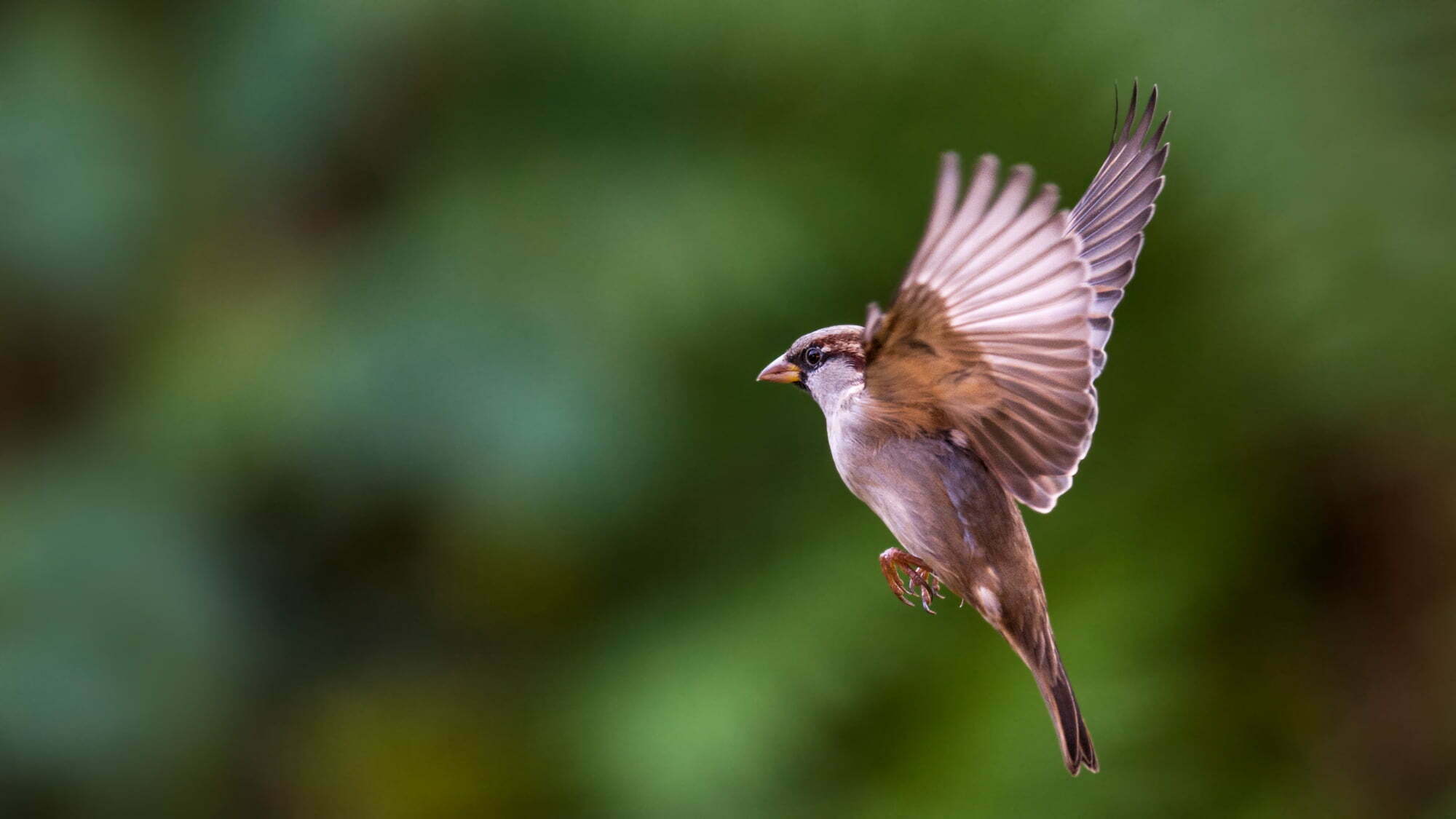
What Do Sparrows Eat?
Sparrows are primarily granivorous, which means their diet consists largely of seeds. However, they are also opportunistic feeders and adapt their eating habits to what is available in their environment.
In the wild, you’ll find sparrows consuming a diverse range of foods; their diet may include:
- Seeds: They feed on a variety of seeds from grasses, weeds, and grains.
- Insects: Sparrows eat insects, especially during the breeding season, as they are a rich protein source.
- Fruits and Berries: Although less common, they will eat small fruits and berries.
If you provide backyard feeders, you can attract sparrows with specific types of food. Suitable options for feeding sparrows include:
| Food Type | Benefit for Sparrows |
|---|---|
| Black oil sunflower seeds | High in fat, provides energy |
| Millet | Small and easy to consume |
| Cracked corn | Good for ground-feeding |
| Peanuts | High in protein and fat |
When setting up a backyard feeder, remember that sparrows are ground feeders, and they prefer to eat seeds off the ground or on low platform feeders.
Be mindful that any food left outdoors can attract other wildlife, so maintain cleanliness to deter unwanted visitors. It’s also important to ensure a fresh supply of water is available, as hydration is essential to their diet and overall health.
The food you provide in your backyard can supplement the sparrows’ natural diet, especially in urban areas where natural food sources may be limited.
How Do Sparrows Feed Their Young?
When you observe sparrows caring for their young, you’ll notice they prioritize efficient feeding techniques.
Sparrow parents, both male and female, are diligent in foraging for food and bring a variety of insects and invertebrates to their juveniles. The diet of sparrow chicks is rich in protein, crucial for their rapid growth and development.
Initially, sparrow parents chew and partly digest the food to make it easier for their offspring to swallow. As the juveniles grow, the size of the food items increases.
Here’s how the feeding process typically unfolds:
- Search for Food: Sparrow parents hunt for suitable nourishment within close proximity of the nest.
- Pre-Digestion: Food is often pre-digested if the chicks are very young.
- Delivery and Feeding:
- Parents return to the nest.
- They signal to their chicks, which respond with open mouths.
- Parents carefully transfer the food to each waiting chick.
Frequency of feeding varies but is generally high, with parents feeding their young every 15-20 minutes from dawn to dusk.
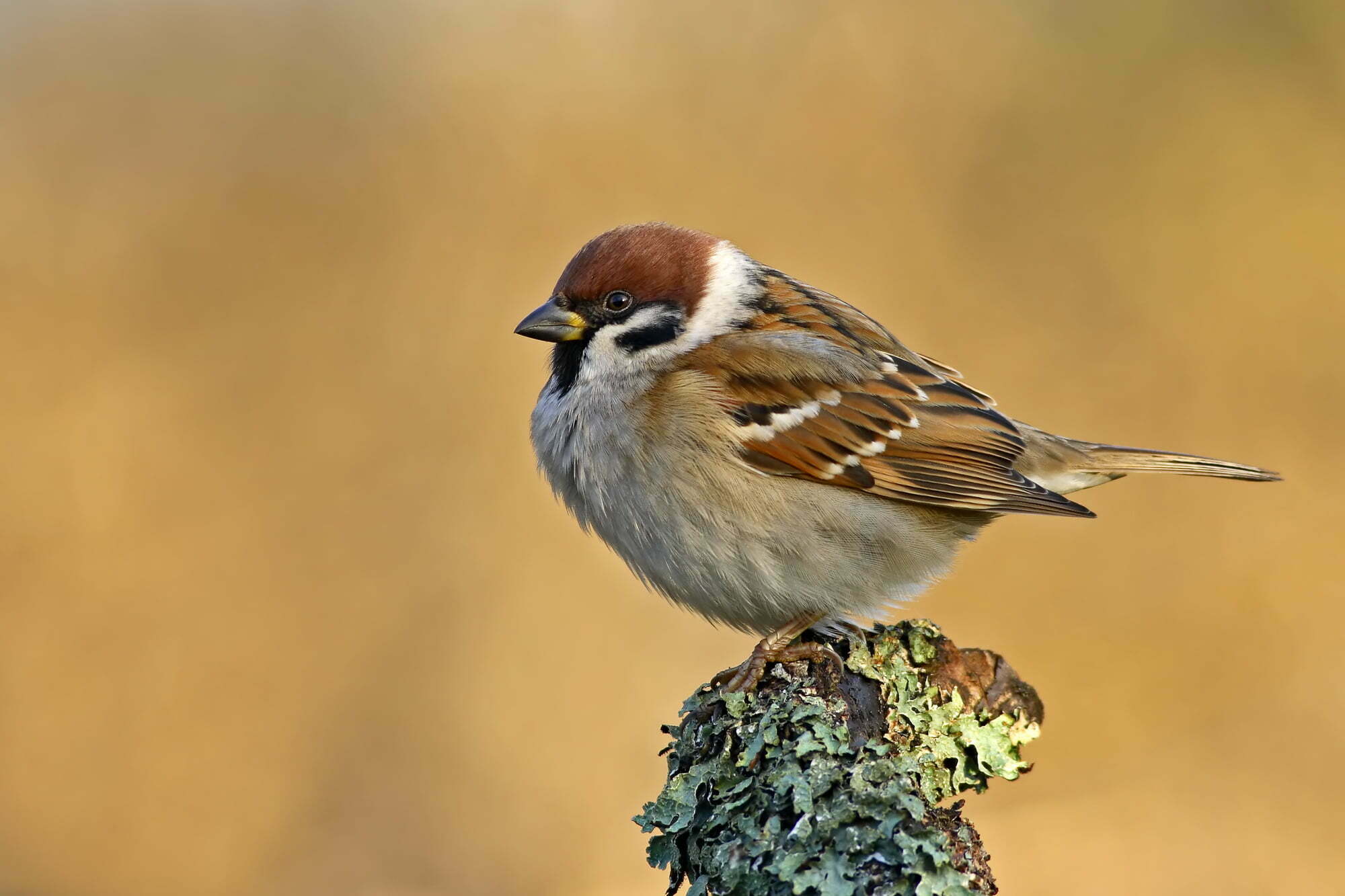
What Is the Conservation Status of Sparrows?
Sparrows, a diverse group of passerine birds, belong to several genera within the family Passeridae. Their conservation status varies by species and region.
Some species, like the House Sparrow (Passer domesticus), remain widespread and of least concern, while others face more significant threats.
For example, the Field Sparrow (Spizella pusilla) is currently listed as Least Concern by the IUCN Red List, although some populations are decreasing due to habitat loss.
This habitat degradation, often from agricultural development and urban expansion, impacts their survival and breeding success.
Across the globe, sparrow habitats range from forests and grasslands to human-dominated landscapes. Y
ou may observe that urban and suburban areas, while supportive of some sparrow species, can be detrimental to others that thrive in more natural settings.
To aid in their preservation:
- Monitor populations through bird counts and surveys
- Create and maintain protected natural areas
- Manage urban spaces to be more bird-friendly
| Species | Habitat | Conservation Status |
|---|---|---|
| House Sparrow | Urban, Rural | Least Concern |
| Field Sparrow | Grasslands, Open Woodlands | Least Concern |
How Can I Attract Sparrows to My Garden?
To create an appealing environment for sparrows in your backyard, there are several strategies you can employ.
Consistency and attention to the natural preferences of these birds are essential.
Food Sources:
- Set up bird feeders and fill them with mixed seeds, especially millet and sunflower seeds.
- Scatter grains and breadcrumbs in moderation around the garden.
Water Availability:
- Install a birdbath with clean water for drinking and bathing.
- Ensure the water stays unfrozen in colder months.
Shelter and Nesting:
- Grow dense shrubs or hedges, as sparrows prefer these for nesting.
- Put up nesting boxes to provide additional shelter.
Natural Habitat:
- Avoid using pesticides; sparrows thrive in natural ecosystems.
- Maintain a section of your garden that is a bit wild to attract more sparrows.
Community Approach:
- Encourage your neighborhood or local community to create sparrow-friendly habitats.
- Connect with bird watchers and birders in the suburbs to exchange tips on attracting sparrows.
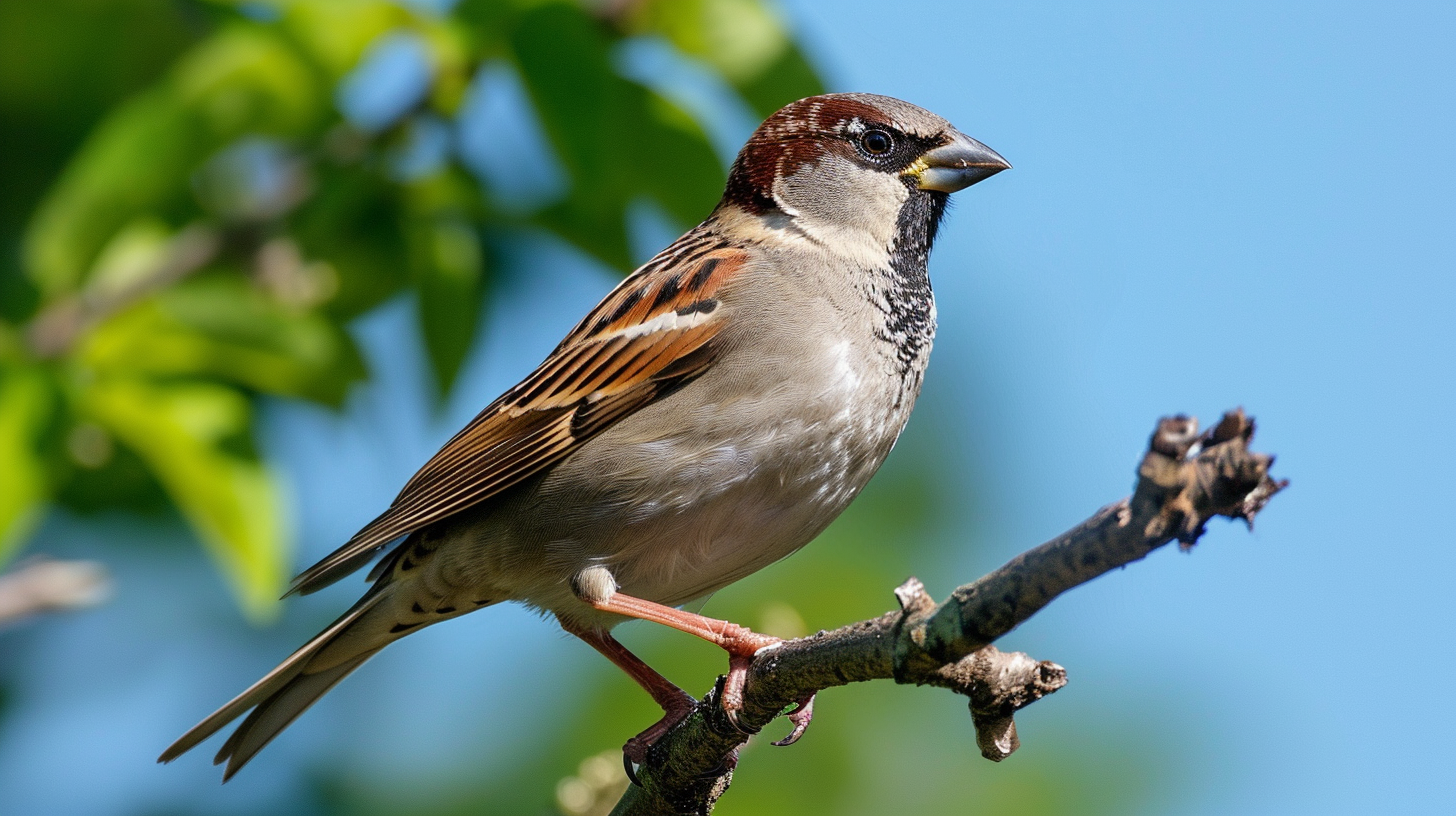
What Is the Wingspan of A Sparrow?
When you observe a sparrow, one of its distinctive features is its wingspan. The typical wingspan of a sparrow varies depending on the species.
However, a common rule of thumb is that most sparrows have a wingspan ranging from 18 to 25.5 centimeters (7 to 10 inches).
Here’s a brief overview:
- House Sparrow: 21-25.5 cm (8.3-10 in)
- American Tree Sparrow: 18-22.5 cm (7-8.9 in)
- Chipping Sparrow: 20-25 cm (7.9-9.8 in)
Your understanding of sparrow wingspans benefits from recognizing that these birds are adapted for rapid, agile flight.
The wingspan of a sparrow directly influences its flight capabilities and patterns. A shorter wingspan allows for quick, small flaps, which are ideal for the typical start-and-stop pattern noted in sparrows’ flight behavior.
It is also important to realize that external factors, such as diet and habitat, can affect the wingspan to some extent. Nevertheless, the genetic blueprint of the species sets the general parameters.
What Kind of Songs Do Sparrows Sing?
When you listen closely to sparrows, you’ll notice their songs are a chorus of intricate sounds. These small birds are known for their vocal abilities, with each species having a distinct song structure.
Song Sparrows, in particular, are prolific vocalists. Their songs are a collection of varying notes commonly described as “cheep, chirrup, and chirp.”
Their melodies are structured threes, consisting of three short notes followed by a trill. These birds often repeat their songs incessantly throughout their habitat.
Sparrows have a diverse range of vocals that can be broadly categorized into:
- Calls: Simple notes used to signal their presence, alarm, or communicate with their flock.
- Songs: More complex and melodious, these are typically performed by males during the breeding season to attract mates and assert territory.
When identifying sparrow songs, listen for these elements:
- Consistency: Individual sparrows often stick to a particular song pattern with minor variations.
- Frequency: Their singing peaks at dawn and dusk, with less activity throughout the day.
- Purpose: You can infer the reason for their singing by observing the context, such as the presence of potential mates or rivals.
To further distinguish, observe the following song characteristics:
- Duration: Short bursts of a few seconds.
- Pitch: Varies, but generally high and clear.
- Repetition: Certain notes or entire sequences repeated several times.
What Are The Sparrow Mating Rituals Like?
Sparrow mating rituals are a fascinating aspect of their behavior. During the breeding season, you’ll notice males displaying a variety of behaviors designed to attract females. These rituals can include song, flight displays, and physical alterations such as enhanced plumage coloring.
Males usually begin by establishing and defending territories. They do this to demonstrate to potential mates that they are capable of securing a prime nesting spot. You can identify territorial behavior by watching for males who are singing persistently and chasing away other males.
| Behavior | Purpose |
|---|---|
| Singing | Attract females, mark territory |
| Flight Displays | Show vigor, attract attention |
| Nest Building | Indicate readiness to mate |
Once a female enters a male’s territory, the male performs a special mating dance. This includes fluttering his wings and a variety of chirps and songs. It’s his way of saying, “I am a suitable mate.”
Females evaluate the males based on their performances, their songs, and their ability to hold territory.
After the initial courtship, if a female is interested, she may signal her acceptance by assuming a submissive posture. This signals the male to proceed with mating.
Post-copulation, you may observe the pair engaging in nesting activities together, with both males and females collecting materials, though females typically handle the actual nest building.
The timing of these rituals may vary slightly depending on the Sparrow species and the local climate, but generally, this activity peaks during the spring and early summer.
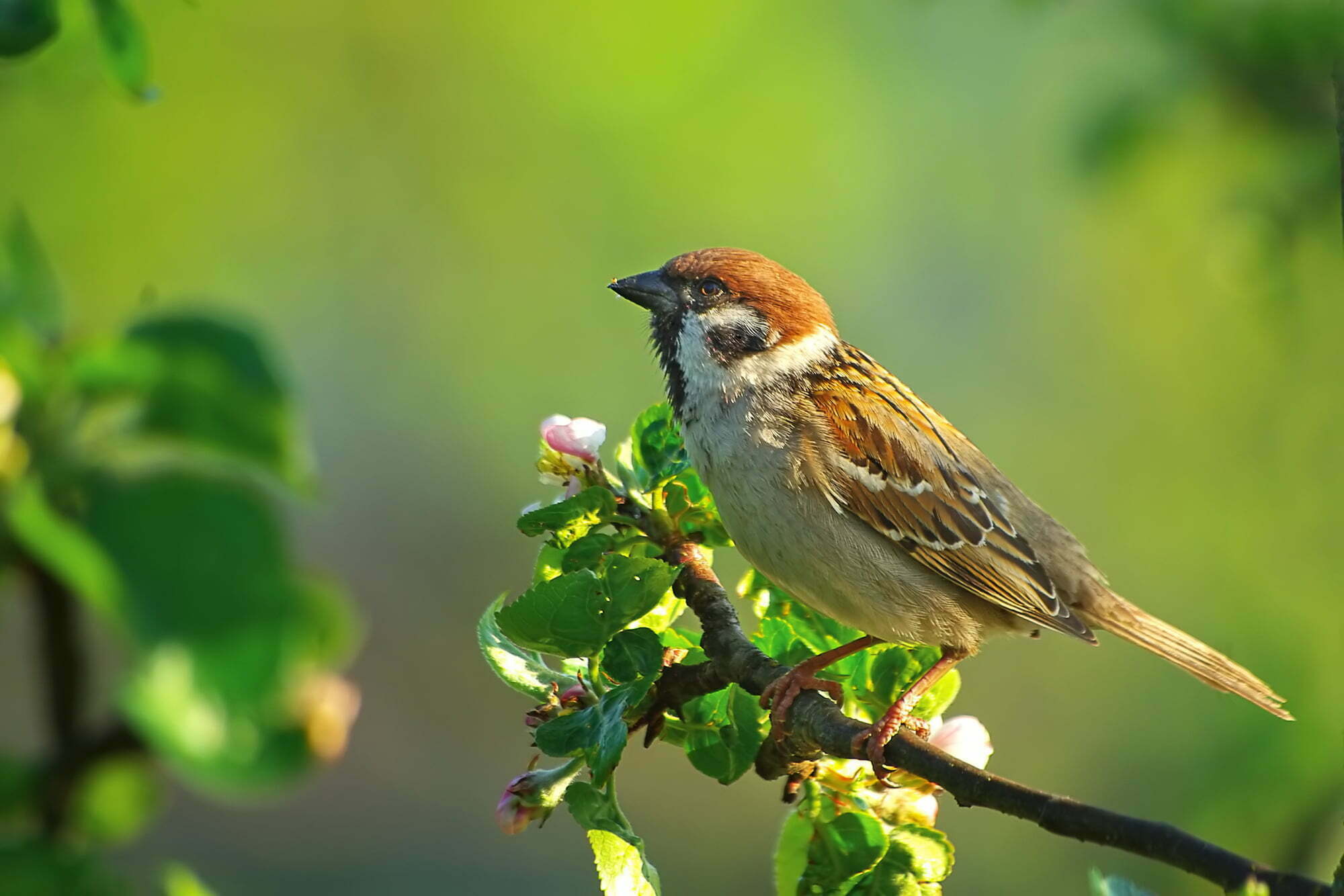
How Can You Identify a Sparrow Nest?
When you’re observing sparrows and their nesting habits, you’ll notice they are not overly particular about where they make their homes, but there are certain characteristics you can look for to identify a sparrow nest.
Location: Sparrows usually choose locations that are a bit hidden to avoid predators. Your search for a sparrow nest should start by checking:
- Holes or cavities in trees
- Vents and eaves of buildings
- Dense bushes
- Overgrown grassy or shrubby areas
Shape and Materials: A sparrow’s nest typically has a rounded shape and is often made of an assortment of materials, including:
- Twigs
- Grass clippings
- Strips of paper
- Feathers
- Various types of litter
Sparrows are resourceful birds and use what is readily available to them. You might be surprised by the creativity of their choices.
Habitat: Pay attention to their habitat preferences:
- Urban or rural areas
- Proximity to human dwellings
- Availability of food resources
Sparrows are adaptable and can nest in varied environments as long as their basic needs for food and safety are met.
What Do Baby Sparrows Look Like When They’re First Born?
When a baby sparrow, also known as a chick, emerges from its egg, it’s a sight quite different from the adult birds you’re familiar with.
These juveniles are altricial, meaning they are entirely dependent on their parents at birth. Initially, they have no feathers and are blind, with their eyes remaining closed for several days.
Appearance:
- Skin: Pink and mostly featherless.
- Size: Small, roughly the size of a walnut.
- Eyes: Closed, typically opening after 4-5 days.
Development:
Baby sparrows develop quickly. Here is what you can typically expect:
- Day 1: Naked and helpless, the chicks rely on their parents for warmth.
- First Week: They start to show pinfeathers, which are the beginnings of their future plumage.
- Second Week: Feathers begin to unfold and the chicks grow stronger.
| Age (Days) | Developmental Stage |
|---|---|
| 0 | Bare skin, eyes closed |
| 7-10 | Pinfeathers visible, eyes usually open |
| 14 | Feather sheaths break revealing growing feathers |
You’ll notice that their first feathers, or natal down, are much fluffier and softer than adult plumage. This initial coat provides limited insulation and isn’t suited for flight.
The colors are often dull, with a mixture of gray and brown hues, evolved as a form of camouflage to protect them in the nest.
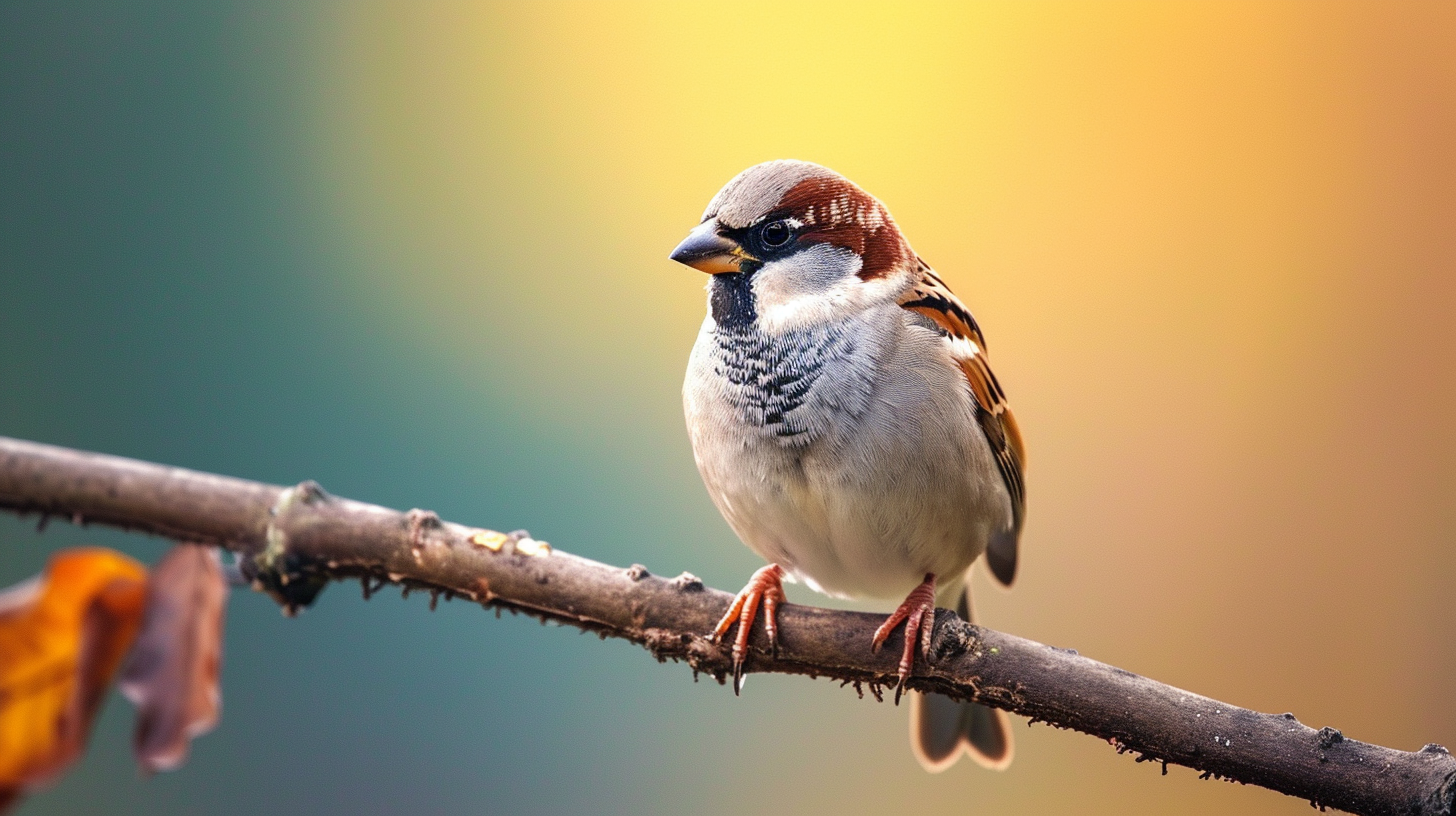
How Far Do Sparrows Migrate?
Migration patterns in sparrows vary by species, with some making remarkable long-distance journeys and others traveling shorter distances.
- Chipping Sparrows: These birds migrate from the northern part of their range in Canada and the northern United States to the southern United States and Mexico. Their migration can span around 1,000 miles.
- Common Sparrows (House Sparrows): Typically, they don’t migrate and are year-round residents wherever they are found. However, there may be short-distance movements depending on local conditions.
- White-crowned Sparrows: Their migration can cover a considerable distance, journeying from their breeding grounds in Northern Canada and Alaska to the southern United States and Mexico, a distance that can exceed 2,600 miles.
- American Tree Sparrows: Their winter migration takes them from the Arctic tundra of Canada to the warmer regions of the central United States, a trip of about 2,000 miles.
- Song Sparrows and Fox Sparrows: While some populations are sedentary, northern populations tend to migrate relatively short distances to more temperate areas in winter.
- Savannah Sparrows: Often migrate between breeding areas in northern Canada and wintering grounds on the southern coasts of the United States.
- Lincoln’s Sparrows: These sparrows migrate from their breeding territories in Canada and the northern U.S. to the southern U.S. and Mexico.
Migratory routes often include stops in various habitats, such as wetlands, which serve as crucial resting and refueling sites.
How High Can Sparrows Fly?
Unlike migratory birds that soar at great altitudes, sparrows generally fly at lower heights. When you observe sparrows, you’ll usually see them flitting about at tree level or below, often no higher than 10 to 20 meters above the ground.
This behavior is related to their feeding habits and the need to remain within close proximity to their food sources on the ground.
During migration, some species of sparrows exhibit different flying habits. They may ascend to higher altitudes, where wind conditions are favorable for long-distance travel.
Sparrows have been recorded at altitudes up to 1.5 kilometers during migration, although this is not the norm for their daily activities.
Here’s a quick breakdown of sparrow altitude ranges:
- Daily Activities:
- Feeding and Nesting: 1.5 – 20 meters
- Avoiding Predators: Up to 30 meters
- Migration:
- Average Altitude: 150 – 600 meters
- Maximum Recorded: Approximately 1.5 kilometers
Your typical backyard sparrow will stay close to familiar territory, leveraging its ability to maneuver quickly through trees and urban landscapes.
The relatively low altitude flight of sparrows affords them rapid access to shelter in the face of predators and harsh weather conditions.
How Can You Protect Sparrows from Predators?
Protecting native sparrows in your backyard and suburbs involves creating a safe habitat. Predator deterrents and environmental enhancements are key strategies to promote sparrow safety.
Deterrents:
- Placement of Feeders: Hang bird feeders at least 5 feet off the ground and away from surfaces predators can climb.
- Baffles: Install cone-shaped baffles on feeder poles to prevent predators from reaching the sparrows.
- Reflective Objects: Use reflective tape or old CDs around your garden to scare away birds of prey.
Environmental Changes:
- Dense Plantings: Plant thick shrubs or brush piles where sparrows can hide.
- Avoid Ground Feeding: Only use hanging feeders; ground feeding attracts predators such as cats and raccoons.
- Safe Nesting Sites: Offer secure nesting boxes that are predator-proof, with entrance holes small enough for just sparrows.
Cat Control:
- Neutering: Support local spay/neuter programs to reduce feral cat populations.
- Bells on Collars: If you own cats, fit their collars with bells to alert sparrows.
- Indoor Cats: Keep your cats indoors, especially during the breeding season for sparrows.
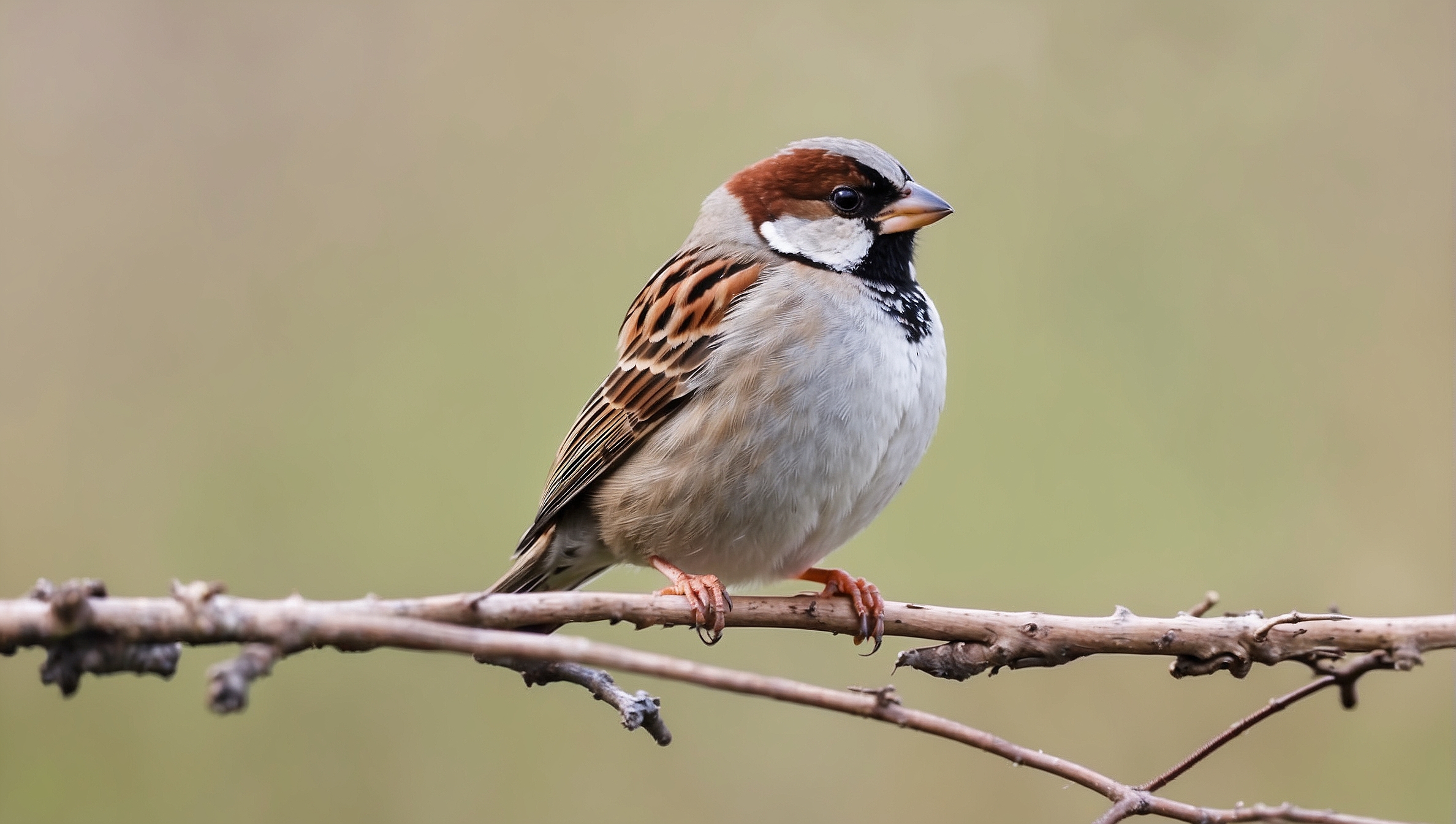
What Should You Do if You See A Sparrow That’s Injured or Sick?
When encountering an injured or sick bird, like a sparrow, immediate yet cautious action is crucial to aiding the bird. Here are clear and direct steps you should take:
- Safety First: Before approaching, ensure your safety and that of the bird. Sparrows may carry diseases or become stressed if handled improperly.
- Assess the Situation: Observe the sparrow from a distance to discern its condition. Is it bleeding, having trouble flying, or showing signs of distress?
- Contain the Sparrow: If it’s safe to proceed, gently place the sparrow in a ventilated cardboard box lined with paper towels. Do not offer food or water as improper feeding can be harmful.
- Minimize Stress: Place the box in a warm, dark, quiet place to calm the sparrow.
- Seek Professional Help:
- Contact a local wildlife rehabilitator or veterinarian experienced with birds.
- Use resources like eBird or Bird Academy to locate nearby assistance.
- Report the Band: If the sparrow has a leg band, report the number to the Bird Banding Laboratory (BBL). This can provide valuable information about the bird’s travels and health to conservationists.
- No Self-Treatment: Avoid self-treating the bird. Handling or medicating without expertise can do more harm than good.
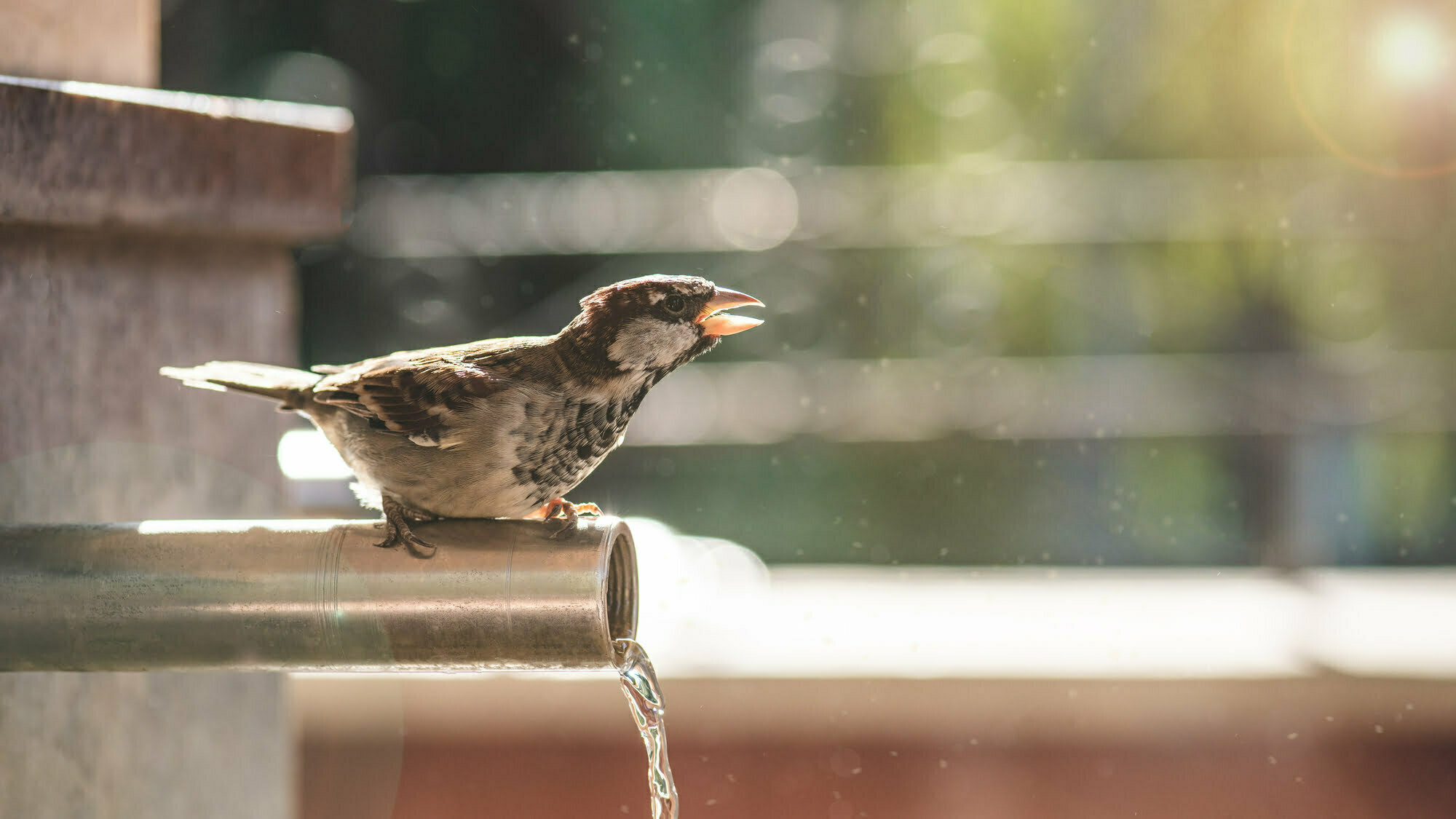
How to Get Sparrows to Trust You?
Gaining the trust of sparrows in your backyard involves consistency and patience. Begin by creating a welcoming environment with a backyard feeder. Here’s a concise guide to help you foster a trusting relationship with these small birds:
- Location: Place your feeders in a quiet area of your backyard where sparrows naturally feel safe. Near shrubs or bushes, but not too close, to provide them with a quick retreat if necessary.
- Feeding: Regularly fill the feeders with sparrow-friendly seeds like millet or mixed seed. Ensure feeders are clean to keep birds healthy.
- Water: Provide a clean water source nearby for drinking and bathing. A shallow bird bath can serve this purpose and makes your backyard more attractive to sparrows.
- Patience: Spend time near the feeder quietly, so sparrows get used to your presence. Avoid sudden movements or loud noises that can scare them away.
- Observation: Watch from a distance to understand their feeding patterns and preferences. This knowledge can be used to make your backyard more sparrow-friendly.
- Caution: Keep pets inside while sparrows are feeding to prevent scaring them off.
- Schedules: Refill feeders at the same time each day to create a routine. Sparrows will learn to trust the consistency of food availability.
With these steps, you’ll create an inviting atmosphere in your backyard that will encourage sparrows to visit regularly and eventually trust you.
